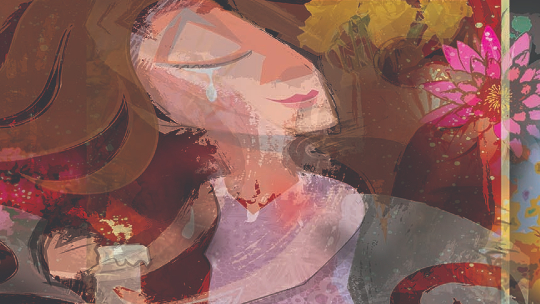Like most people who live here in the islands, I love rice. And up until this past year or two, I would eat a large serving of white rice daily.
My grandma’s family immigrated to Ewa Beach from Hiroshima, Japan. Tutu ate a bowl of white rice daily after working on the plantation workers’ laundry. (She used a washboard, so it wasn’t easy.)
The rice would be plain or with a treat, like a freshly cracked egg that cooked a bit on top of the super-hot rice or a tiny piece of fish with pickled cabbage. Unfortunately, my great-grandma lost her husband in an accident and struggled to raise her six kids without him. She did the best that she could and that involved saving money and serving a lot of white rice. She didn’t just eat the rice; she also saved the bags and made clothes out of them. The family worked so hard and burned all that simple starch off.
Unlike my grandma, rice is my Kryptonite.
When I had gestational (pregnancy) diabetes, I once ate a tiny white rice musubi and felt dizzy and sick afterwards. I checked my blood sugar levels and they were near 200. So, I switched to brown rice. But, for some odd reason, I would still have blood sugar levels near 145 two hours after a meal. (My doctor gave me a goal of keeping my levels below 140 two hours after any meal.)
I tried quinoa one day and two hours later my blood sugar level was 90-something. I read up on the grain and found that quinoa has more protein and lower carb content than other grains, adding to it’s growing popularity. It made me wonder if I’m missing out on some delicious grains that are less processed -- and better for me.
I did my research and I tried some out. Here’s the scoop on these rice alternatives:
Amaranth Grain
Amaranth is gluten-free and has about twice the protein, potassium and magnesium when compared to brown rice. It also has a ton of calcium and iron! That’s awesome if you’re breastfeeding or pregnant since you need more calcium. Amaranth is also recommended as a morning hot cereal to give you more energy to start your day.
Here’s a shot of amaranth being prepared like oatmeal or porridge. I cooked 1 cup of the grain with 2 cups of water on the stovetop. Just bring to a boil, reduce heat to low and cover, cooking for about 20-25 minutes. I added milk, a bit of brown sugar and cinnamon and topped with sliced bananas and apples and my kids (and I) enjoyed it!

Black rice (also called forbidden rice)
When compared to other types of rice, black rice has more protein and fiber. It also has the antioxidant anthocyanin, which is found in blueberries. Anthocyanin is thought to help protect against cancer and heart disease.
When I think of rice I always want to pair it with a nice fillet of fish. So this is a picture of black rice mixed with pan fried salmon with chili pepper and served with some asparagus.
I boiled 1 cup rice with 1 ¾ cups of water and a pinch of salt. Then I covered it, reduced the heat and let it simmer for 30 minutes. The color was a turnoff to my kids who are so used to white or brown rice, but it tasted good to me, just a little on the chewier side.

Pearled farro
Farro is rich in magnesium and B vitamins. Unfortunately, I made a mistake and picked up the pearled farro when the semi-pearled variety has more fiber and nutrients since the bran is more intact. The pearled variety does cook faster, which is convenient.
Farro is a type of hard wheat, so those with a wheat allergy should skip this one. I cooked this on the stovetop with water, brought to a boil and then reduced the heat, covered and simmered for 25-40 minutes.
I like this simple recipe the most: Toss cooked farro with feta, bacon bits, cucumber and cherry tomatoes. I ate most of this myself, it was so delicious! A friend of mine loves to saute farro with kale and bacon and said that’s pretty good as well.

Soft white wheat berries
Wheat berries are high in carbohydrates and fiber and are rich in B vitamins, magnesium, phosphorus, selenium, manganese, and copper.
I soaked these overnight in cold water, then boiled the berries for about an hour so they were cooked thoroughly. This was the hardest grain of the bunch and I wasn’t quite sure what to mix with it. I ended up adding this to fresh salad I took to work later in the week.

Whole oat groats
Oat groats are whole oats, basically what you have before cutting the grain and making steel cut oats, so this version is the best for your health and high in fiber. They are also rich in iron and phosphorus and like other whole grains, have more protein and fiber than processed pre-cooked instant oats.
Instant oats will raise my blood sugar a bit but not these groats (or steel cut oats) since there is less processing involved. The texture of groats is chewier, but it did remind me of hot cereal so I cooked this one up and added a summer salad mix of cut up apples, oranges, and mangoes and sprinkled some cinnamon on it. My son seemed to really like it, but he has my sweet tooth! My daughter couldn’t get past that the fact that I was serving something with such a different texture, so she passed on it, and just ate a peach instead.

Quinoa
Quinoa is great to soak up sauce and it’s my go-to rice replacement. It’s also available in pre-packaged boxes, mixes, or in the salad bar of your favorite health-food stores.
Here’s a pic of nice curry quinoa I found at a nearby grocery store that was really tasty and another pic of a parmesan butter package mix quinoa that wasn’t as good. I usually just cook my quinoa in the rice cooker just like white or brown rice but I use chicken stock instead of water to it and it has a nice hearty taste.





